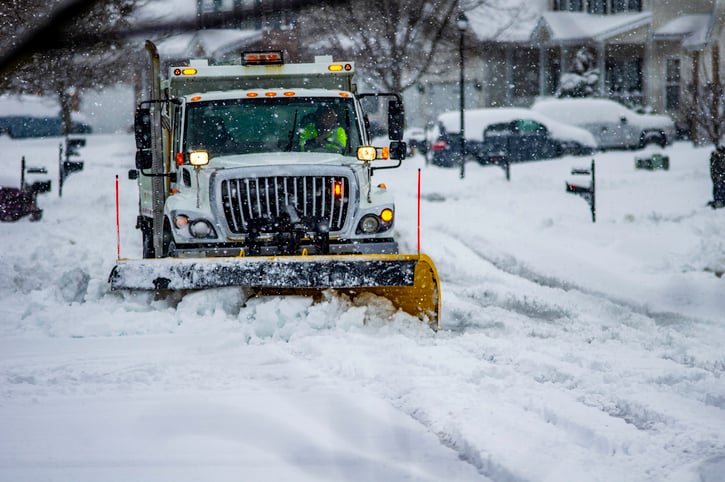Dear EarthTalk: What are the environmental impacts of all the de-icing and snow removal taking place on roads everywhere in the wake of all the recent storms? — Benjamin P Sander, via e-mail
The act of removing pure white snow seems innocuous enough, but it is actually fraught with negative environmental side effects. One major concern is the snow’s salt content, as most locales use sodium chloride (rock salt) to de-ice roads. But this salt can make nearby freshwater ecosystems uninhabitable for plant and wildlife species, and can affect the quality and taste of local drinking water supplies.
Besides salt, removed snow contains accumulated amounts of antifreeze, engine oil, rubber and metal deposits from tire wear, and heaps of plastic litter, cigarette butts and other waste which is also poisonous to local ecosystems no matter where it ends up.
Researchers in Toronto, Ontario have found that at least one local snow dump has been wreaking havoc in the nearby Don River. “Road salt adversely affects sensitive species when it exceeds 200 milligrams per liter of water,” reports journalist Michael Lehan. “Almost half of the test results taken between 2002 and 2005 in the river exceeded that, and the highest concentration recorded was almost 4,000 milligrams per liter.” The result, he says, is that the river can barely support life. “Only six pollution resistant fish species…can be found in the river.” Across town in the city’s west end, the Humber River—which doesn’t have a snow dump to contend with—supports some 30 species of fish.
Many regions are working on ways to green their snow removal processes. In Maryland, for example, road crews are pre-treating major roadways with brine, a saltwater solution that helps prevent snow and ice from sticking and thus reduces the amount of salt needed after a storm. The state is also experimenting with a beet juice and brine mix with the hope that it will stick to roads better and prevent snow and ice build-up. Massachusetts pre-treats roads with magnesium chloride to help prevent incoming snow and ice from sticking, and also uses a sodium chloride and calcium chloride mix on icy roads in environmentally sensitive areas and when the temperature gets too low (below 20 degrees Fahrenheit) for rock salt to be effective. According to the U.S. Environmental Protection Agency (EPA), using de-icers properly can cut down on the amount applied overall and improve road conditions.
Regardless of how much and what de-icers a given locale chooses to use, where the resulting removed snow ends up is the most important environmental consideration. In New Hampshire, another state that’s no stranger to snow, state officials require the placement of a silt fence between snow dumps and any nearby waterways, and have mandated that snow storage areas be at least 400 feet from municipal wells.
Of course, those who complain about the environmental effects of snow removal should consider the root cause of the problems: The concentrated hazards in snow dumps—from rock salt to motor oil—are mostly a direct result of our society’s reliance on the private automobile. While asking your local and state government to green up their snow removal operations is one way to help, another is to choose mass transit or carpool whenever you can, and to convince as many friends as you can to do likewise.
CONTACTS: Maryland Department of Transportation, www.mdot.maryland.gov; Massachusetts Department of Transportation, www.massdot.state.ma.us; U.S. EPA, www.epa.gov.
SEND YOUR ENVIRONMENTAL QUESTIONS TO: EarthTalk®, P.O. Box 5098, Westport, CT 06881; [email protected]. Read past columns at: www.emagazine.com/earthtalk/archives.php. EarthTalk® is now a book! Details and order information at: www.emagazine.com/earthtalkbook.








